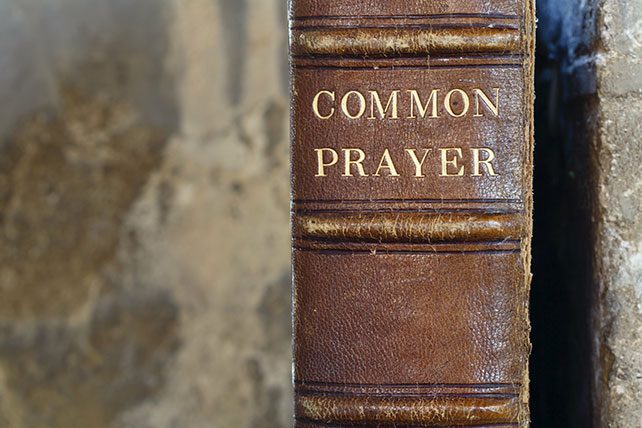We in the Reformed tradition would struggle for another four hundred-plus years with the language of prayer, creating patterns of intercession that were memorable for their length if nothing else before returning to the style of the prayer book as inspiration for a new generation of worship resources.
The Centrality of Holy Communion
Central to the Book of Common Prayer, though not always to the practice of many Anglicans, has been the understanding of Lord’s Day worship based around Word and sacrament. The 1549 prayer book offered daily worship (morning and evening) in a synthesis of the historic Roman pattern, with Eucharist on the Lord’s Day. Throughout the following centuries much of the non-Roman church has varied this practice to suit the understanding of the time.
Christians in the Reformed tradition still celebrate the Lord’s Supper in quarterly, monthly, or weekly cycles, depending on the customs and traditions of congregations or regions. The Book of Common Prayer has served as a constant reminder of the intent of the reformers, and a perpetual nag for those who craft the worship resources in each new age.
So What?
An anniversary this notable is important for present-day Christians, as it can serve to remind us that the struggles we face as worship leaders in 2024 are nothing new. The church reforms that rocked sixteenth-century Europe were by no means unique or surprising. A revival of learning had brought into serious question much of the tradition that had evolved in the church. Meanwhile, the power of the Scripture was being rediscovered by those within the church who were not content to watch the trappings of human tradition discredit the Word of God. Reform was inevitable.
The church reform that continues to shake North America in the last days of the twentieth century is by no means unique or surprising for many of the same reasons. Change remains inevitable.
In times of reform, those who guide the church have much to learn and remember. The 1549 prayer book brought together prayers and psalms, litanies and liturgies from a vast number of separate sources, organizing them so as to be useful in public and private prayer and translating historic texts from Latin into the language of the people. Had the publication of the Book of Common Prayer accomplished nothing else, this alone would have been noteworthy. But during the reign of a child-king and in an age of rampant religious restructuring, the Book of Common Prayer anchored the reform of the Church of England within the tradition of the historic church. Truly this is an uncommon book that offers the broader church a vision for common prayer. Thanks be to God for 450 years of common prayer, and for grace yet unknown.
The Collects of Thomas Cranmer
For those interested in more on the contribution of Thomas Cranmer’s Prayer Book of 1549, see The Collects of Thomas Cranmer, a new book by Frederick Barbee and Paul F. M. Zahl. The collects are found in their original language; each one is followed by commentary on its historical context and a meditation with contemporary Christians in mind.
This article on the Book of Common Prayer originally appeared here, and was used by the author’s kind permission.

